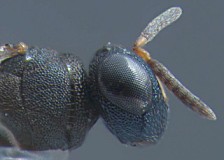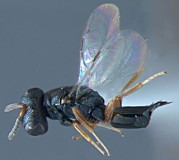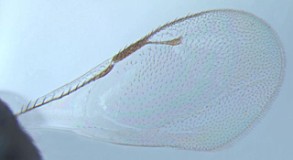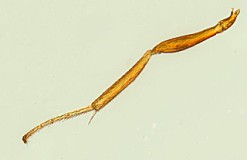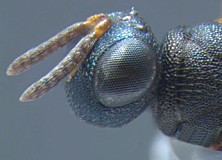Pachycrepoideus vindemmiae (Rondani)
Pachycrepoideus dubius Ashmead, 1904
Pachycrepoideus elongata Delucchi, 1955
Pterosemoidea drosophilae Dodd, 1917
Toxeumella dissimilis Girault & Dodd, 1915
Toxeumopsis nigra Girault, 1915
The species name for Pachycrepoideus vindemmiae is often incorrectly spelled vindemiae because of confusion on the part of Rondani in a subsequent publication.
In laboratory studies, Wang and Messing (2004) found that P. vindemmiae readily parasitized 4 other tephritid fruit fly parasitoids commonly used in biological control programs Fopius arisanus (Sonan), Diachasmimorpha longicaudata (Ashmead), Diachasmimorpha kraussii (Fullaway), and Psytallia concolor (Szépligeti)] and, at least in the case of Fopius arisanus, P. vindemmiae did not show a preference for nonparasitized over parasitized tephritid hosts. The offspring of P. vindemmiae faired equally well in small, non-tephritid fruit flies (Drosophila melanogaster) and larger tephritid fruit flies (Ceratitis capitata) with the adult females showing a preference for the smaller host but investing more female offspring on the larger host. The authors caution against the use of P. vindemmiae in traditional biological control applications due to its generalist tendencies and flexible body growth which may lead to an expansion of its host range to include nontarget species, echoing recommendations made by others (e.g. Wharton 1989).
